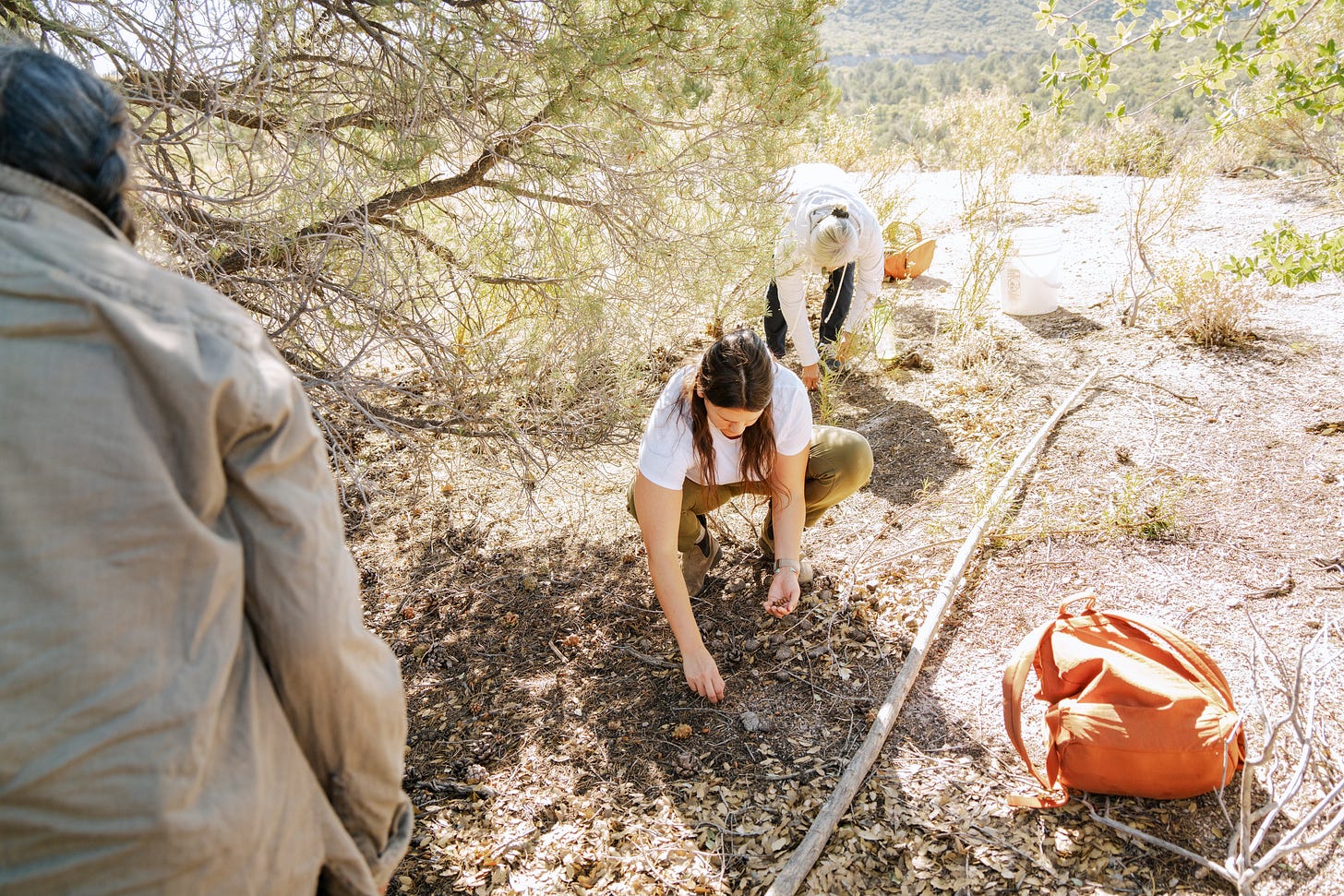Indigenous Agroforestry: Growth and Challenges
I have a short news clip out in the current issue of Mother Earth News which may be of interest to Unsettling readers, covering a new collaborative effort around Indigenous agroforestry in the Northwest; I’ve copied it here.
It may seem a pretty basic bit of reporting — okay, the USDA is funding some people to get together and share information about forestry practices — but these are the kinds of building blocks that help make practices like tribal co-management a reality, and that truly bring TEK (traditional ecological knowledge) into active use by the federal agencies that play such a major role in land management. So here it is:
Growing Indigenous Agroforestry
From the April/May issue of Mother Earth News (available in print at your local bookstore or newsstand, and online)
In the Northwest, a movement is afoot to broaden the decision-making around forest-based agriculture. A growing coalition anchored by the Portland-based nonprofit Ecotrust is looking to uplift tribal and climate-smart forestry. In 2023, the coalition received a $2.5 million grant from the U.S. Department of Agriculture’s (USDA) National Institute of Food and Agriculture to build out a “community of practice” and to set the groundwork for collaboration around research and agroforestry projects.
“‘Agroforestry’ is a modern term for what tribes have been practicing for millennia,” says Stephanie Gutierrez, Ecotrust’s forest and community program director. “For many tribes, that’s traditional gathering and management practices, harvesting fungi, roots, and trees.” Examples might include tending wild huckleberry bushes or prescribed burns to improve acorn harvests. This is in addition to practices that have been commonly associated with agroforestry, such as silvopasture or the creation of riparian buffers.
With the increasing impacts of climate change on agriculture, Gutierrez thinks tribally managed agroforestry “may point the way to sustainable agriculture and wild-food sources, allowing us to provide food for our communities.”

One way the network sees that happening is through improvement and increased use of the USDA’s Forest Vegetation Simulator (FVS), a growth and yield model that can simulate outcomes from specific forest-management scenarios over time to aid in decision-making. The tool is calibrated at a regional level and can be further adjusted using on-the-ground data to better reflect patterns observed at the local level. Local calibration informed by tribal data can increase the accuracy of simulated forest-management scenarios and provide agroforestry practitioners with a valuable tool to inform management decisions and help increase yields in the forest.
“We work with the community to go to places on their land where they gather and try to describe why this is a good place for gathering, describe what the canopy looks like, how much light is hitting the forest floor, [and] what kind of forest management has happened in the past,” Gutierrez says. This qualitative data can go into the FVS to help shape future treatments and yields.
The coalition grew out of work done with the Northwest Agroforestry Working Group at Oregon State University and the development of the Northwest Tribal Agroforestry StoryMap. To learn more about past and current Indigenous agroforestry practices, visit the Indigenous Agroforestry Network, and view the StoryMap.
That’s it—like I said, it’s a short clip. But I share it because it’s also worth pointing out that recognition of Indigenous agroforestry practices as part of broader forest management can change the notion of what the Forest Service and other agencies are managing for, and possibly take us towards more holistic, less market-driven approaches to forestry.
As members of the Intertribal Timber Council highlight in their work on the most recent Indian Forest Management Assessment, tribal foresters tend to take what they describe as a more balanced approach: “We're managing not just for timber like a lot of places around us have, but also the cultural resources, wildlife, medicines, everything that we’ve always done here,” says Elisa Flores, Forest Planner for the Hoopa Valley Tribe. While the USDA and the Forest Service have promoted some agroforestry practices since the early 1990s, the approach is often piecemeal, without the more integrated perspective offered by Flores and others.
So, can we continue to expand the kinds of knowledge sharing happening with the Indigenous Agroforestry Network, and spread practices that care for the whole forest and its human social community, not just for the single commodity of timber? Maybe—but it certainly will take more work and support, as the Intertribal Timber Council’s assessment team makes painfully clear in Breaking Point: The State of Tribal Forestry Today, in which they call not just for better funding for tribal forestry practitioners but a better understanding and implementation of the Department of the Interior’s trust responsibility as it applies to forested lands. No small task, as can be seen in team’s executive summary capturing the many challenges and possible policy recommendations to meet them.
But work like that in progress at the Indigenous Agroforestry Network helps move the needle, bit by bit.
If you’re still new to the concept of agroforestry, what it looks like and how it might differ under tribal stewardship, make sure to take a look at the Network’s StoryMap, which offers plenty of context on conventional models of agroforestry (which I don’t mean to denigrate—they can be quite useful), and how some of the same practices change or expand when taken up by tribal practitioners.
That’s it for this week. I’ll be back with more soon, including an update on where we’ve sent our most recent collective donation. Which makes this a good moment to remind you that 10% of what comes in from paid subscriptions goes back out to support on-the-ground work, including land justice and reparations projects. If you enjoy Unsettling, it’s never a bad time to subscribe and join the collective giving effort.
Thanks for reading. Until next time,
Meg




